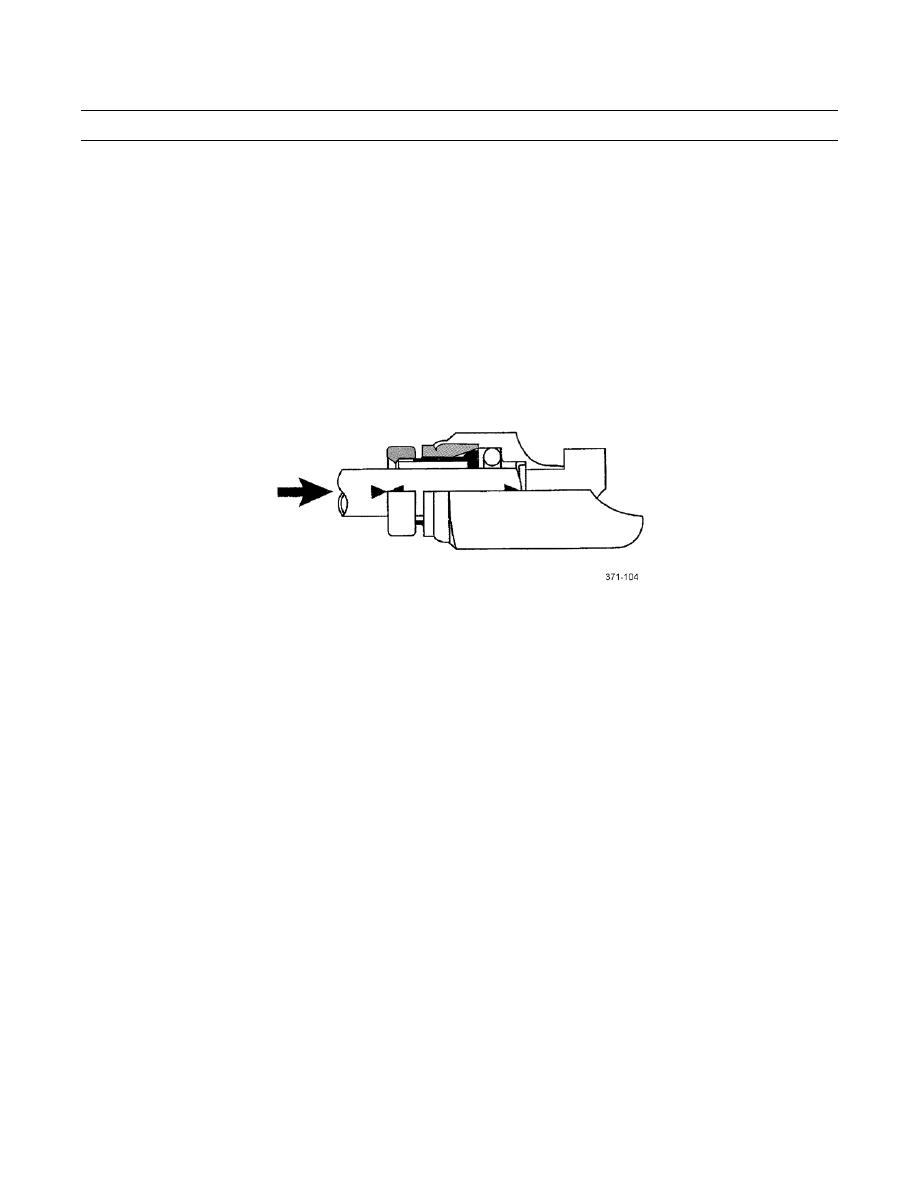 |
|||
|
|
|||
|
Page Title:
PUSH-IN AIR TUBE FITTINGS - CONTINUED |
|
||
| ||||||||||
|
|
 TM 9-2320-302-20-2
GENERAL MAINTENANCE INSTRUCTIONS - CONTINUED
0299 00
PUSH-IN AIR TUBE FITTINGS - CONTINUED
c.
Position new air tube to vehicle. Check that port or mating part is clean and free of debris.
NOTE
Perform steps d and e at each end of air tube.
d.
Insert air tube into push-in fitting until it bottoms. Push twice to ensure that air tube is inserted past collet and o-
ring.
e.
Confirm that air tube is fully installed to push-in fitting by pulling on air tube. Air tube should not pull out of push-
in fitting.
INSERT AIR TUBE UNTIL IT BOTTOMS
TAGGING WIRES AND HOSES
1.
Use marker tags to identify all electrical wires, fuel, oil, air, and coolant lines, and any other parts which may be hard to
identify or replace later. Fasten tags to parts during removal by wrapping wire fasteners around or through parts and
twisting ends together. Position tags to be out of the way during cleaning, inspection, and repair. Mark tags with a pen-
cil, pen or marker.
2.
Whenever possible, identify electrical wires with the number of the terminal or wire to which it connects. If no markings
can be found, tag both wires or wire and terminal, and use the same identifying mark for both. If you cannot tag a wire
because it must fit through a small hole or you cannot reach it, write down the description of the wire and the point to
which it connects or draw a simple diagram on paper. Be sure to write down enough information so you will be able to
properly connect the wires during assembly. If you need to identify a loose wire, look for identifying number near end of
the wire, stamped on a permanent metal tag. Compare the number to wire numbers on the appropriate electrical sche-
matic.
3.
Identify fuel, oil, and coolant lines when you are taking off more than one line at the same time. Mark tags with points to
which lines and hoses must be connected. If it is not obvious which end of a line goes where, tag each end of the line.
4.
Identify and tag other parts as required by name and installed location.
SOLDERING
CAUTION
Use low wattage soldering gun when soldering electrical wires, connectors, terminal lugs, and receptacles.
High wattage soldering guns may damage parts by overheating.
0299 00-7
|
|
Privacy Statement - Press Release - Copyright Information. - Contact Us |